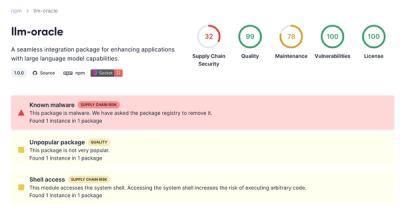
This is plugin that only has a peer dependency to piral-core. What piral-dashboard brings to the table is a set of Pilet API extensions that can be used with piral or piral-core.
Why and When
Many portal and tool applications come with a dashboard view that easily allows getting an overview over the most interesting pieces of functionality and information. This plugin allows creating dashboard pages that contain components registered as "tiles". The layout and behavior of these can be fully configured. The standard options include variable rows, columns, and resize properties.
Alternatives: Use extensions to define this generically without the need for a plugin. Place each dashboard in its own extension slot registering components dynamically for these.
Video
We also have a video for this plugin:
@youtube
Documentation
The following functions are brought to the Pilet API.
registerTile()
Adds the definition of a tile to the app shell. Optionally specifies display characteristics like the initial rows, initial columns, or if the tile can be resized by the user.
If the first argument is a string a named tile is registered. A named tile can also be removed.
unregisterTile()
Removes a tile from the app shell. This requires a named tile.
Usage
::: summary: For pilet authors
You can use the registerTile function from the Pilet API to add a new tile in the app shell.
Note: When the first argument is a string we call it a named tile.
Example use:
import { PiletApi } from '<name-of-piral-instance>';
import { MyTile } from './MyTile';
export function setup(piral: PiletApi) {
piral.registerTile(MyTile);
}
You can use the unregisterTile function from the Pilet API to remove a previously added tile from the app shell.
Note: You'll need to have added a named tile in order to be able to remove it.
Example use:
import { PiletApi } from '<name-of-piral-instance>';
import { MyTile } from './MyTile';
export function setup(piral: PiletApi) {
piral.registerTile('first', MyTile);
piral.unregisterTile('first');
}
:::
::: summary: For Piral instance developers
The provided library only brings API extensions for pilets to a Piral instance.
For the setup of the library itself you'll need to import createDashboardApi from the piral-dashboard package.
import { createDashboardApi } from 'piral-dashboard';
The integration looks like:
const instance = createInstance({
plugins: [createDashboardApi()],
});
Via the options the defaultPreferences and the global/initially available tiles can be defined.
Consider for example:
const instance = createInstance({
plugins: [createDashboardApi({
defaultPreferences: {
initialColumns: 2,
initialRows: 2,
resizable: true,
},
tiles: [
{
component: MyTeaserTile,
preferences: {
initialColumns: 2,
initialRows: 4,
},
},
],
})],
});
By default, the dashboard is located at the homepage (/). You can change this via the routes setting:
const instance = createInstance({
plugins: [createDashboardApi({
routes: ['/dashboard'],
})],
});
Or alternatively, don't use any route for it and just reference the Dashboard component on any page or within the layout.
const instance = createInstance({
plugins: [createDashboardApi({
routes: [],
})],
});
import { Dashboard } from 'piral-dashboard';
Customizing
You can customize the available tiles and their options.
import type {} from 'piral-dashboard';
declare module 'piral-dashboard/lib/types' {
interface PiralCustomTilePreferences {
category?: string;
}
}
:::
License
Piral is released using the MIT license. For more information see the license file.







